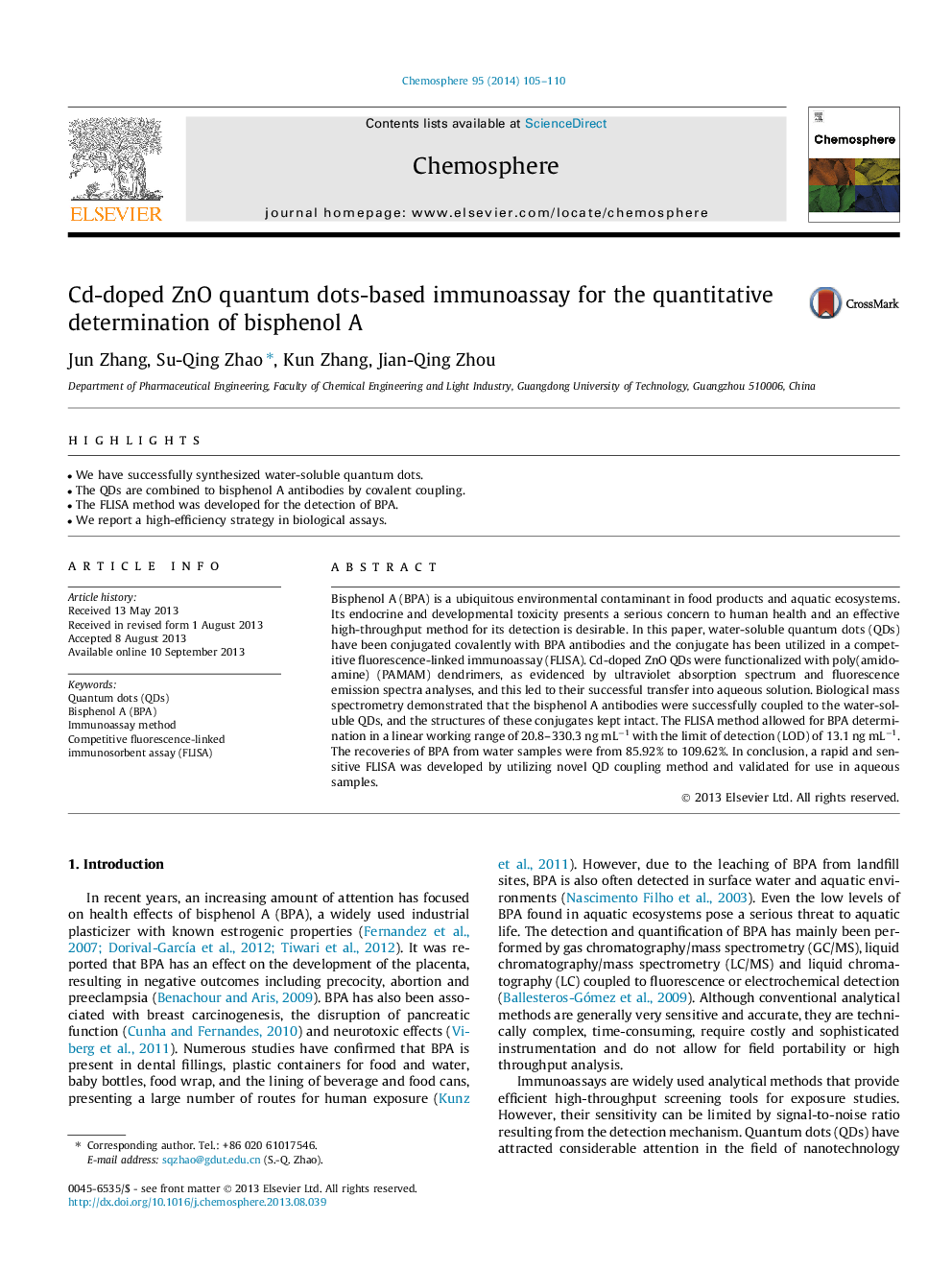| Article ID | Journal | Published Year | Pages | File Type |
|---|---|---|---|---|
| 6309744 | Chemosphere | 2014 | 6 Pages |
Abstract
Bisphenol A (BPA) is a ubiquitous environmental contaminant in food products and aquatic ecosystems. Its endocrine and developmental toxicity presents a serious concern to human health and an effective high-throughput method for its detection is desirable. In this paper, water-soluble quantum dots (QDs) have been conjugated covalently with BPA antibodies and the conjugate has been utilized in a competitive fluorescence-linked immunoassay (FLISA). Cd-doped ZnO QDs were functionalized with poly(amidoamine) (PAMAM) dendrimers, as evidenced by ultraviolet absorption spectrum and fluorescence emission spectra analyses, and this led to their successful transfer into aqueous solution. Biological mass spectrometry demonstrated that the bisphenol A antibodies were successfully coupled to the water-soluble QDs, and the structures of these conjugates kept intact. The FLISA method allowed for BPA determination in a linear working range of 20.8-330.3 ng mLâ1 with the limit of detection (LOD) of 13.1 ng mLâ1. The recoveries of BPA from water samples were from 85.92% to 109.62%. In conclusion, a rapid and sensitive FLISA was developed by utilizing novel QD coupling method and validated for use in aqueous samples.
Keywords
Related Topics
Life Sciences
Environmental Science
Environmental Chemistry
Authors
Jun Zhang, Su-Qing Zhao, Kun Zhang, Jian-Qing Zhou,
